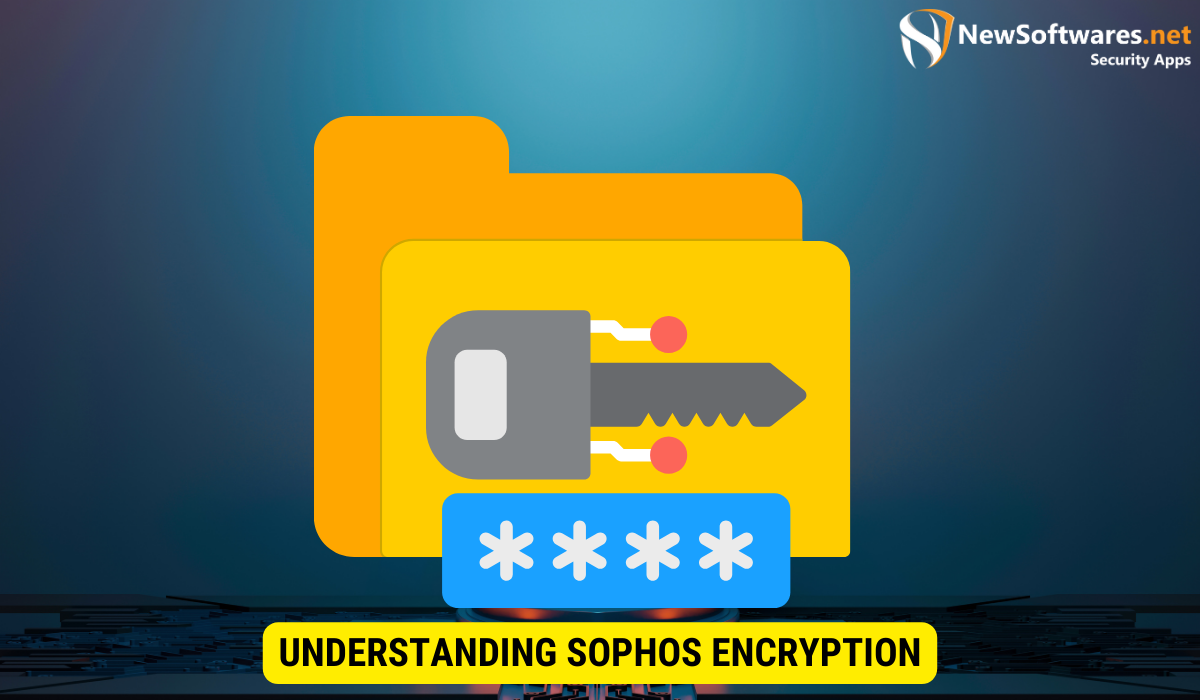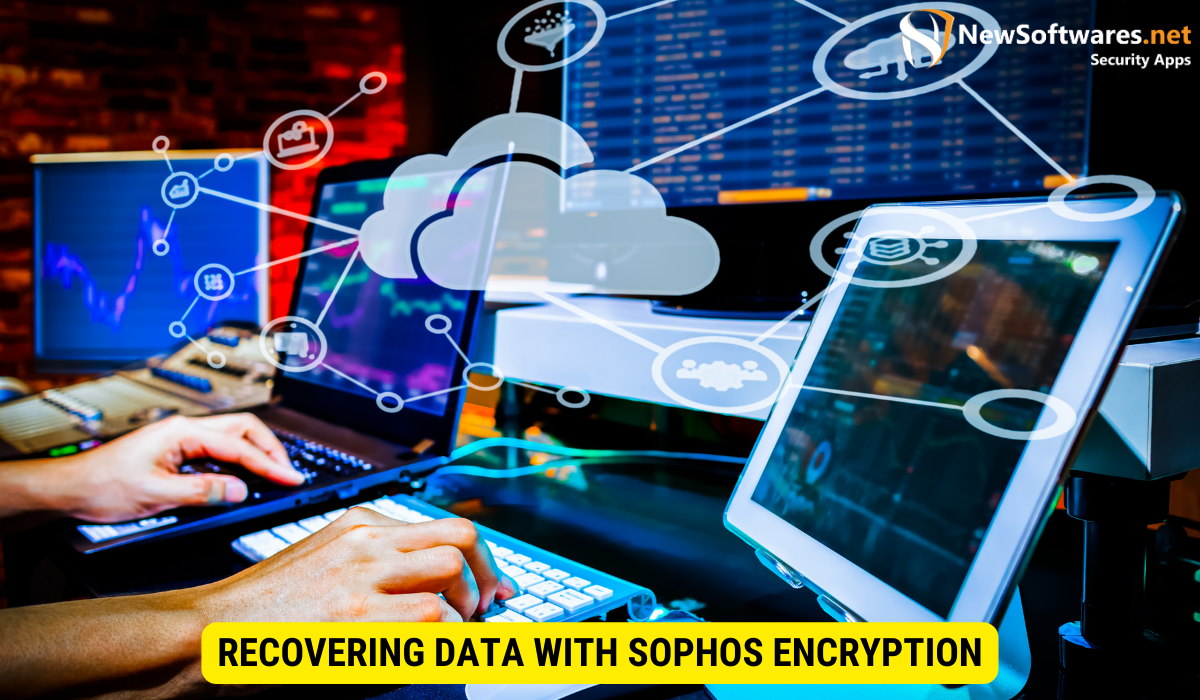To slave a drive and recover data with Sophos Encryption, follow these steps:
-
Understand Sophos Encryption: Sophos Encryption employs strong encryption algorithms for data protection.
-
Prepare for Data Recovery: Gather necessary tools, prepare your workstation, and follow safety precautions.
-
Configure BIOS for Slaving: Identify master and slave drives, configure BIOS settings, and restart your computer.
-
Initiate Data Recovery: Log in, access Sophos Encryption management console, select the slaved drive, and provide necessary credentials for decryption.
-
Decrypt Data: Choose the data to recover, enter the decryption key or credentials, and save the recovered data securely.
Sophos Encryption is a powerful tool that provides data protection and protection for businesses and individuals alike. However, there may be instances when you need to recover data from a drive that is encrypted using Sophos Encryption. Together, we will discuss the steps involved in slaving a drive to recover data with Sophos Encryption. We will also look at the key features of Sophos Encryption and provide troubleshooting tips for common issues that may arise during the data recovery process.
Understanding Sophos Encryption

Sophos Encryption is a comprehensive solution that ensures the confidentiality and integrity of data through the use of strong encryption algorithms. It allows users to encrypt both individual files and entire drives, providing an additional layer of security for sensitive information. By encrypting data, Sophos helps organizations comply with industry regulations and protect valuable assets from unauthorized access.
The Role of Sophos in Data Protection
Sophos plays a crucial role in safeguarding data by encrypting it at rest and in transit. When data is encrypted, it becomes unreadable without the proper decryption key. This ensure that even if an unauthorized individual gains entrée to the encrypted data, they will not be able to decipher its contents. Sophos Encryption offers various encryption options, including full disk encryption and file-level encryption, allowing users to choose the level of protection that best suit their needs.
Key Features of Sophos Encryption
Sophos Encryption offers several key features that make it an ideal choice for data protection:
- Centralized Management: Sophos Encryption provides a centralized management console that allows administrators to easily enforce encryption policies, manage encryption keys, and monitor the status of encrypted devices.
- Automatic Key Management: With Sophos Encryption, the encryption keys required to access encrypted data are managed automatically, reducing the burden on users and minimizing the risk of key loss.
- Strong Encryption Algorithms: Sophos Encryption uses industry-standard encryption algorithms such as AES and RSA to ensure the confidentiality and integrity of data.
- Integration with Existing Infrastructure: Sophos Encryption seamlessly integrates with existing IT infrastructure, making it easy to deploy and manage across an organization.
- Audit and Compliance: Sophos Encryption provides detailed audit logs and reports, helping organizations demonstrate compliance with data protection regulations.
Preparing for Data Recovery
Before you can proceed with slaving a drive to recover data with Sophos Encryption, it is essential to make the necessary preparations:
Necessary Tools and Equipment
To slave a drive, you will need a few tools and equipment:
- A secondary drive: This can be an external USB drive or an internal drive that you will use as the slave drive.
- A SATA or IDE cable: The type of cable will depend on the connection interface of the drive you are slaving to.
- A screwdriver: You may need to open your computer case to connect the slave drive.
- An appropriate workstation: Ensure that you have a suitable working area with adequate lighting and minimal distractions.
Safety Measures and Precautions
When slaving a drive, it is crucial to observe a few safety measures and precautions:
- Ensure that the computer and all peripherals are powered off and unplugged before opening the case.
- Handle the drives with care, avoiding unnecessary force or rough handling.
- Avoid working on sensitive data without proper authorization, as data recovery processes may involve accessing confidential information.
- Take antistatic precautions to prevent damage to the drives. Use an antistatic wrist strap or a grounding mat to discharge static electricity.
Slaving a Drive: A Step-by-Step Guide
Once you have made the necessary preparations, you can proceed with slaving the drive to recover data. Follow these steps:
Identifying the Master and Slave Drives
Before you begin, it is important to identify the master and slave drives:
- Open the computer case and locate the drives. The drive that contains the encrypted data will be the master drive, while the drive you will slave to will be the secondary or slave drive.
- Check the labels on the drives or refer to the documentation that came with your computer to identify the master and slave drives.
- Take note of the model numbers or any unique identifiers to avoid confusion during the slaving process.
Configuring the BIOS for Drive Slaving
Once you have identified the master and slave drives, you need to configure the BIOS settings:
- Restart your CPU and access the BIOS settings by pressing the proper key during the boot process. The key may vary depending on your CPU manufacturer, but common keys include F2, F10, and Del.
- Navigate to the “Advanced” or “Storage” tab in the BIOS menu, then select the “IDE Configuration” or “SATA Configuration” option.
- Select the master drive as the boot drive and set the slave drive to “Slave” or “Secondary” mode, depending on the available options in your BIOS.
- Save the changes & exit the BIOS settings. Your computer will restart.
Recovering Data with Sophos Encryption

Now that you have slaved the drive and configured the BIOS settings, you can proceed with the data recovery process:
Initiating the Data Recovery Process
To initiate the data recovery process, follow these steps:
- Start your computer and log in using an account that has administrative privileges.
- Open the Sophos Encryption management console and navigate to the “Recover Data” section.
- Select the slaved drive from the list of available devices. Sophos Encryption will start scanning the drive for encrypted data.
- Follow the on-screen instructions to provide the necessary credentials or recovery keys to decrypt the data.
Decrypting the Data with Sophos
Once the slaved drive has been scanned, you can proceed with decrypting the data:
- Select the encrypted data you wish to recover and click on the “Decrypt” button.
- Sophos Encryption will prompt you for the necessary decryption key or credentials. Enter the required information to start the decryption process.
- Once the decryption is complete, you can access the recovered data & save it to a secure location.
Troubleshooting Common Issues
While slaving a drive to recover data with Sophos Encryption is generally a straightforward process, you may encounter some common issues along the way. Here are a few tips to help you troubleshoot them:
Dealing with Inaccessible or Corrupted Data
If you encounter inaccessible or corrupted data during the recovery process, try the following:
- Check the connections between the master and slave drives to ensure they are secure.
- Restart your computer and try slaving the drive again, making sure to follow the proper steps.
- If the data remains inaccessible or corrupted, consult the Sophos Encryption documentation or contact their support for further assistance.
Resolving Sophos Encryption Errors
If you encounter errors related to Sophos Encryption during the data recovery process, consider the following troubleshooting steps:
- Ensure that you are using the most recent version of Sophos Encryption. Check for updates and install them if necessary.
- Review the error message displayed by Sophos Encryption and consult the documentation or support resources for guidance on resolving the specific error.
- If the error persists, contact the Sophos support team for further assistance. Provide them with detailed information about the error, including any error codes or messages you have encountered.
Key Takeaways
When it comes to slaving a drive to recover data with Sophos Encryption, there are a few key takeaways to remember:
- Sophos Encryption is a powerful tool that provides data protection and security through the use of strong encryption algorithms.
- The slaving process involves connecting a secondary drive to the computer and configuring the BIOS settings appropriately.
- By following the necessary precautions and troubleshooting tips, you can enhance the success rate of data recovery and overcome common issues that may arise.
- Sophos Encryption offers centralized management, automatic key management, strong encryption algorithms, integration with existing infrastructure, and audit and compliance features.
- If you encounter difficulties during the slaving or data recovery process, consult the Sophos Encryption documentation or contact their support for further assistance.
FAQs
Here are some frequently asked questions about slaving a drive to recover data with Sophos Encryption:
Can I slave a drive that is encrypted with a different encryption software?
No, slaving a drive to recover data with Sophos Encryption is specifically designed for drives encrypted using Sophos Encryption. If your drive is encrypted with a different encryption software, you will need to refer to the documentation or support resources provided by that software for recovery instructions.
Is it possible to recover data from a drive that has been physically damaged?
While slaving a drive can help recover data from drives with logical issues or software-related problems, physical damage to the drive may require professional data recovery services. Attempting to slave a physically damaged drive without proper knowledge can consequence in further damage and data loss.
Can I recover data from a drive that has been formatted or erased?
If a drive has been formatted or erased, the data may still be recoverable using appropriate data recovery software. However, the success of data recovery depends on several factors, such as the extent of the formatting or erasure, the time elapsed since the formatting or erasure, and the usage of the drive after the incident. It is suggested to seek expert assistance for optimal data recovery results.
How long does the data recovery procedure take?
The period of the data recovery process depends on a variety of factors, including the size and complexity of the encrypted data, the performance of the computer and drives involved, and the speed of the decryption process. It is advisable to allocate sufficient time for the recovery process and avoid interrupting it once initiated.
Can I use the recovered data directly, or do I need to restore it to the original drive?
Once the data has been successfully recovered and decrypted, you can save it to a secure location of your choice. It is generally recommended to avoid using the original drive for storing recovered data, as this may overwrite or compromise the original encrypted data. Instead, make use of a separate drive or storage solution to ensure the integrity of both the recovered data and the original encrypted data.
Conclusion
Slaving a drive to recover data with Sophos Encryption can be a complex process, but by following the steps outlined in this article, you can increase your chances of successful data recovery. Sophos Encryption offers robust features and protection, ensuring the confidentiality and integrity of your data. Remember to take the necessary precautions and consult the documentation or support resources provided by Sophos Encryption if you encounter any issues during the slaving or recovery process. With cautious planning and attention to detail, you can safely recover encrypted data and regain access to valuable information.
